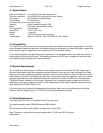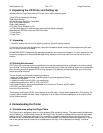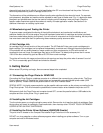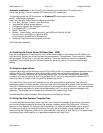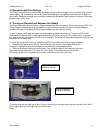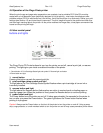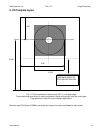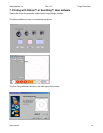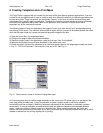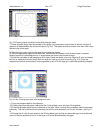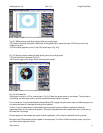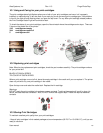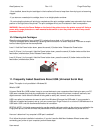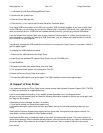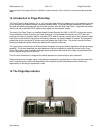
Alea Systems, Inc. Rev.1.13 Pingo-Photo Rep
User manual
15
8. Creating Templates and a Print Mask
The Pingo Photo is supplied with print mask files for some of the more popular graphics applications. If you are
not able to use a supplied mask or need to modify a mask for a different media size, the following procedure can
be used as a guide. These instructions are intentionally "generic" in that they do not use the terminology and
procedures of any specific graphics application. Therefore, the following process requires a working knowledge
of the particular application being used. Refer to the application user's manual if in doubt about how to
implement any of the instructions provided.
The following steps will work for applications that support "layers" and allow control (such as separate viewing
and printing) of the layers. The mask will allow additional layers with print content to be added beneath the mask,
such that the mask crops any content that extends beyond the edges of the disc.
1) Start with a new file in the target application.
2) Configure the page to letter and portrait orientation.
3) Display the layers used in the application; name the first layer "Non Printing Mask".
4) Measure the printable inner and outer diameters of the media to be used.
5) Create concentric circles of the diameters to be used and position them on the page approximately as shown
in Fig. 4-1, "CD Print Placement". Use one-point lines and no fill. See Fig. 5-1.
Fig. 5-1 Two concentric circles on the Non Printing Mask layer
6) Print several test discs to confirm proper placement of the circles on a CD (either right on or just beyond the
outer edge of the printable area - it may be desireable to make a slightly smaller circle first to establish
concentricity and then enlarge it). Make any necessary adjustments to the diameters or placement; maintain
concentricity. (It may be desireable to make several masks with different diameters to accomodate different
media - these can reside on different layers or in different files). When properly positioned, the circles will
become the core components of the mask. At this point, the circles can be used as templates which will be either
deleted or selected as non-printing objects prior to printing.



